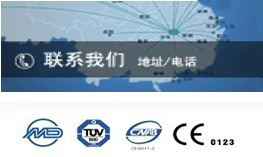| Radiology Room |
| Ultrasound Room |
| Surgery Room |
| Laboratory Room |
| Comprehensive Room |
| Pediatrics Room |
| Dental Room |
| Medical operation instruments |
| Hospital Furniture |
| Medical supplies |
News Center
Less Invasive Anesthetic Methods Favor Endovascular Aneurysm Repair
A new study suggests that using less invasive spinal, epidural, and local monitored anesthesia care (MAC) is better than general anesthesia (GA) for elective endovascular aneurysm repair (EVAR) of infrarenal abdominal aortic aneurysms (AAAs).
Researchers at Wake Forest Baptist Medical Center (Winston-Salem, NC, USA) collected data on 6,009 patients who underwent elective EVAR between 2005 and 2008. GA was used in 4,868 of the cases, while 419 patients had spinal anesthesia during their procedure; 331 had epidural anesthesia; and 391 had local/MAC. Emergency cases and patients who had other procedures being done at the same time that required GA were excluded from the study. The researchers then reviewed the data to evaluate rates of mortality, morbidity, and length of stay (LOS) following the procedure.
The results showed that GA was associated with an increase in pulmonary complications when compared to spinal and local/MAC anesthesia. Use of GA also was associated with a 10% increase in LOS for GA when compared to spinal anesthesia, and a 20% increase when compared to general versus local/MAC anesthesia. Trends toward increased pulmonary complications and LOS were not observed for general versus epidural anesthesia. No significant association between anesthesia type and mortality was observed. The study was published in the November 2011 issue of the Journal of Vascular Surgery.
“General anesthesia was associated with increased postoperative length of stay and increased complications involving the lungs when compared to the other anesthetic methods,” said study coauthor Matthew Edwards, MD, a professor of vascular and endovascular surgery. “Our study data suggest that increasing the use of less invasive anesthetic techniques, when appropriate, may limit postoperative complications in EVAR patients.”
Infrarenal AAAs make up about 95% of total AAA and are most prevalent in men older than 60, affecting about 3% of this population. EVAR has revolutionized aneurysm care, and it is the most common repair procedure in the United States. Historical trends have led to GA being the most common mode of anesthesia used for this procedure, but it is associated with more pulmonary complications. Local anesthesia, local MAC, spinal anesthesia, and epidural anesthesia are alternative methods that may result in a shortened hospital stay and fewer such complications.






